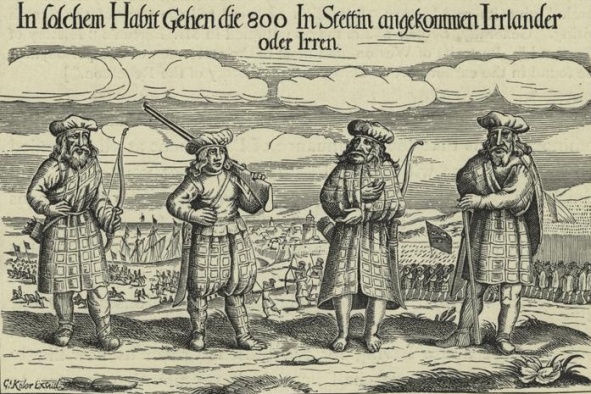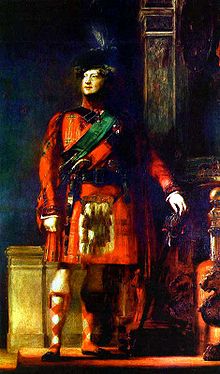| This Week’s Topic… | |||

Best viewed in
|
Tartans What is a tartan? Tartan is a woven material, generally of wool, having stripes of different colors and varying in breadth. The arrangement of colors is alike in warp and weft -- that is, in length and width -- and when woven, has the appearance of being a number of squares intersected by stripes which cross each other, this is called a 'sett. By changing the colors; varying the width; depth; number of stripes, differencing is evolved. Tartan patterns are called "setts" and by this is meant the complete pattern, and a length of tartan is made by repeating the pattern or sett, over and over again. The history of tartan, while interesting, is also controversial, and from time to time discussion has arisen regarding the antiquity of Clan tartans. Arguments are generally involved and can only be understood by those who have studied the subject in depth. References to tartan in early literature supply ample proof that tartan was worn many centuries ago. What may be the earliest written reference to tartan is contained in the accounts of the treasurer to King James III, in the year 1471 where mention is made of tartan purchased for the use of the King and Queen of Scotland. It is improbable that the early tartans were as gaily colored or as tastefully arranged as were the tartans of later years. The skill of the weaver and the availability of plants likely to supply vegetable dyes were the chief factors in determining the colors of a tartan. Colors used would be restricted to the plant dyes found within the various districts. The early tartans would have been similar to a checked, muted material of wool. As chemical dyes became more common, the weavers enlarged their range of colors and introduced more colorful variations to the old patterns. When limited to vegetable dyes, the people of each district were forced by circumstances to use the same colors in their tartans and it is probable that the people of the various districts were recognized by the colors in their tartans. District tartans, as these early patterns are called, might also have served as the Clan tartan, because the people inhabiting Clan districts were, as a rule, members of the same Clan. However there are many instances whereby many different Clans lived and functioned as member of the district. By adding a stripe of different color or by varying the arrangement of colors it is thought that branches of the Clan evolved their own tartans, yet by the similarity of pattern, they displayed their kinship with the main Clan.
What may be the earliest recorded reference to a Clan tartan appears in a Crown Charter of 1587 to Hector MacLean of Duart, wherein the feu duty payable on the lands of Narraboll, Islay, is stated to be "sixty ells of cloth, of white, black and green colors." These colors correspond to the colors in the tartan we now call MacLean hunting, but it is doubtful if their exact arrangement was the same as that in use at the present time. Written evidence regarding the use of Clan tartans prior to the Battle of Culloden are not available. It is generally supposed that each Clan had a special pattern of its own which was worn by the clansmen of the Clan as a means of identifications and as a symbol of the Clan kinship. After the Jacobite defeat at the Battle of Culloden in 1746 the Government determined to purge the Highlands of all unlawful elements and to destroy the Clan system. Accordingly an Act of Parliament was passed which not only aimed at the complete disarming of the Highland Clans but made the wearing of tartans a penal offense. This section of the act was strictly enforced: I, _________, do swear, as I shall answer to God at the great day of Judgement, I have not, nor shall have in my possession any gun, sword, pistol or arm whatsoever, and never to use tartan plaid, or any part of the Highland Garb; and if I do so may I be cursed in my undertakings, family and property, -- may I be killed in battle as a coward, and lie without burial in a strange land, far from the graves of my forefathers and kindred; may all this come across me if I break my oath."This was an especially cruel oath by Highlanders, because most were still Catholic and to 'lie without burial, and blessing, etc'., was a devastating punishment. Many died because of the 'wearing of the tartan', and 'not giving up their weapons', just as many died in Ireland for the 'wearing of the green'. In 1782, the ban on tartans was removed, but by this time the Highlander had become accustomed to the dress worn in other parts of the country and showed no great enthusiasm to rush into tartan clothing. Tartan had, in fact, become only a memory. Many of the old weavers had died out and with their passing old patterns were forgotten.
|
||

